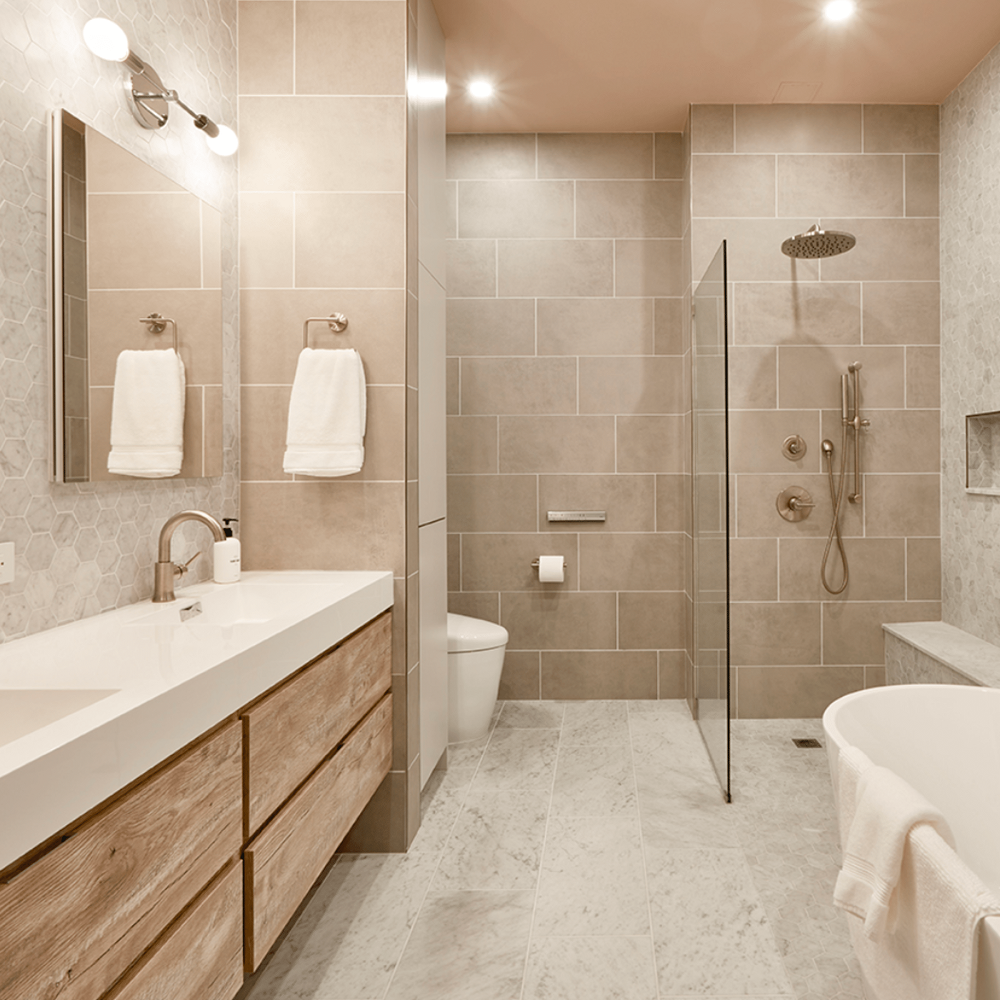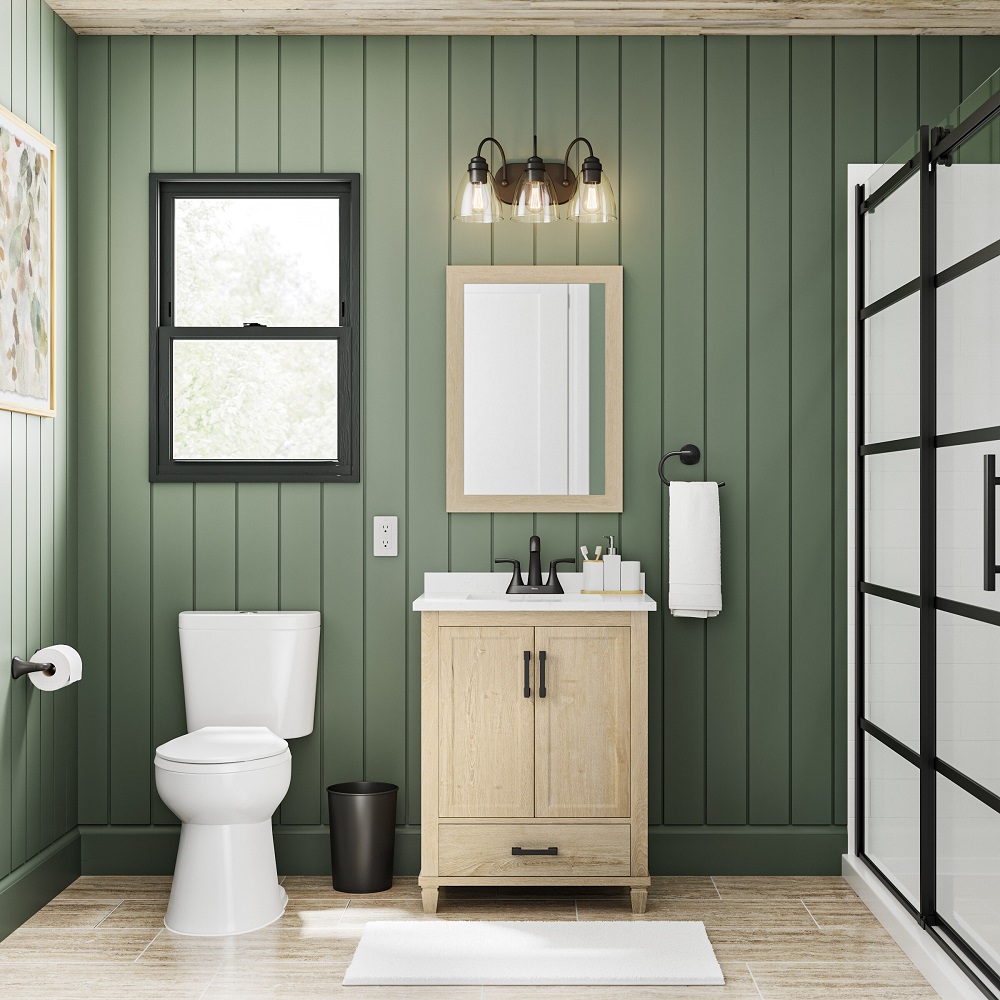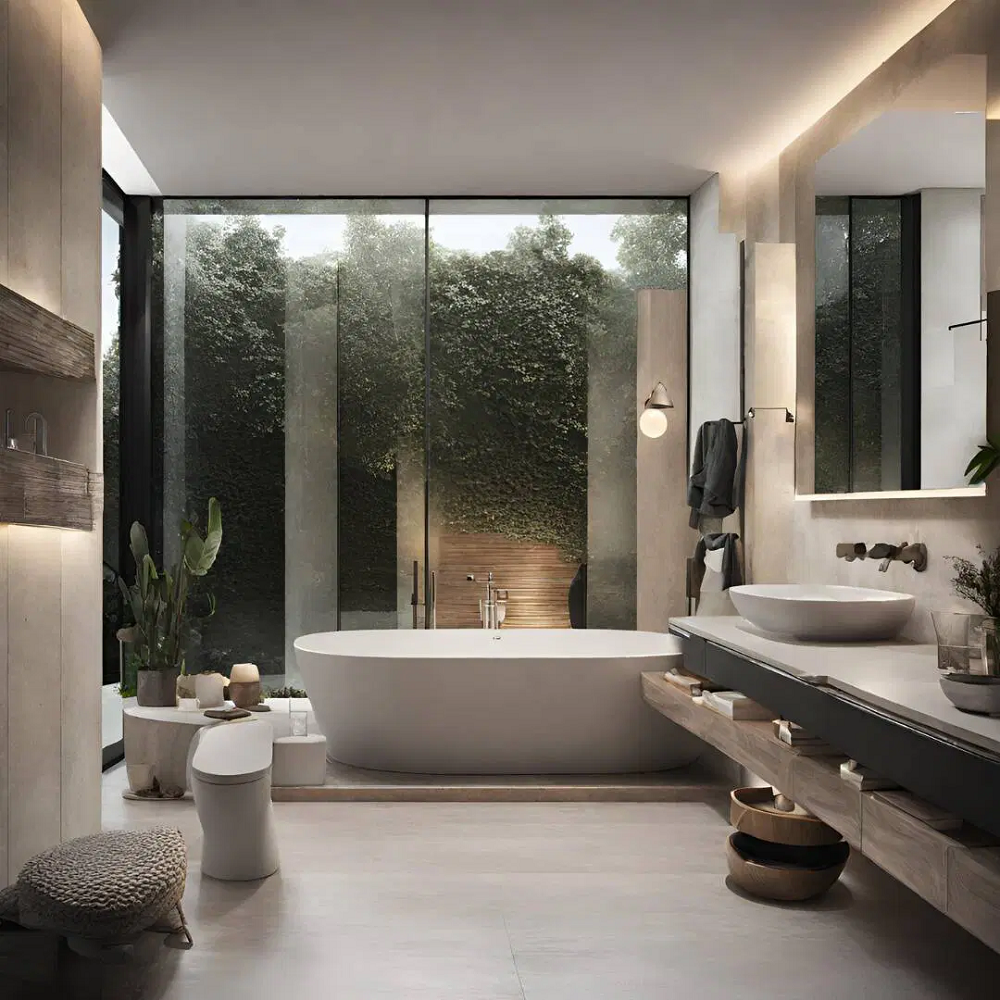Introduction to Bathroom and Restroom Concepts
When navigating public and private spaces, we often encounter terms like ‘restroom’ and ‘bathroom.’ While they might sound similar, they serve different purposes. Bathrooms are typically associated with bathing and personal hygiene, while restrooms are more aligned with public toilet facilities. However, as societal norms and infrastructures evolve, so too do the concepts and designs of these spaces.
Restroom vs bathroom each have their unique features that cater to specific needs. Whether it’s in a home, a commercial establishment, or a public area, understanding the fundamental differences is essential. For instance, a bathroom in a home may include amenities for a more relaxing and personal experience, such as bathtubs or showers. On the other hand, restrooms in public spaces prioritize functionality and quick access, often equipped with multiple stalls and sinks to accommodate many users simultaneously.
The terms can also vary by region, with ‘restroom’ more commonly used in the United States to refer to public toilet facilities. But regardless of the terminology, both bathrooms and restrooms are integral to our daily lives. They reflect the importance of sanitation, privacy, and comfort in our society. Knowing their distinct features and functions helps us appreciate the role of planning and design in creating these essential spaces.
Throughout this blog, we’ll explore the key features, differences, and similarities of bathrooms and restrooms. We’ll also consider the impact of location on their design, as well as the crucial aspects of safety and hygiene that govern their use. So, let’s dive deeper into unraveling the distinct characteristics of bathrooms and restrooms and the considerations that inform their respective designs.

Key Features of a Bathroom
When we think of a bathroom, several key features typically come to mind. These features distinguish a bathroom from a restroom and are primarily geared towards personal hygiene and relaxation. Here are some of the most common characteristics of a bathroom:
- Personal Hygiene Area: A bathroom serves as a private space for individuals to attend to their personal hygiene needs. This often includes activities such as bathing, showering, brushing teeth, and grooming.
- Bathing Facilities: One of the main components of a bathroom is the inclusion of bathing facilities. These can range from a simple shower to a luxurious bathtub designed for soaking and unwinding.
- Toilets and Sinks: Typically, bathrooms contain a toilet and a sink. In some cases, there might be multiple sinks to accommodate more than one person at a time.
- Storage Space: Bathrooms commonly provide cabinets or shelving for storing toiletries, towels, and other personal items. Good storage helps keep the space organized and tidy.
- Privacy: Privacy is critical in bathroom design, with locks on doors and often frosted or obscured windows to ensure users feel comfortable and secure.
- Ventilation and Lighting: Proper ventilation is crucial to prevent mold and maintain air quality. Good lighting is also essential, not only for safety but also for tasks like applying makeup or shaving.
- Personal Touch: Many individuals add a personal touch to their bathrooms with decorative elements, plants, or artwork. Personalization turns the space into a comforting sanctuary within the home.
Understanding these key features helps us recognize what sets a bathroom apart in terms of functionality and comfort. Next, we’ll look at restrooms and their purpose in public settings.
Understanding Restrooms and Their Functionality
Restrooms, often found in public spaces, cater to the basic needs of visitors. These facilities are crucial for maintaining public hygiene and are specifically designed for efficiency and ease of use. Contrary to bathrooms, restrooms do not offer bathing options but are equipped with toilets and sinks to facilitate quick and hygienic visits.
Key Characteristics of Restrooms
- Quick Access: In places like airports or malls, restrooms are strategically located for easy and fast access.
- Multiple Stalls and Urinals: To serve a large number of users, restrooms feature several stalls. Men’s restrooms typically include urinals as well.
- Efficient Design: With heavy traffic in mind, restrooms have a straightforward design allowing for swift movement in and out.
- Cleanliness and Maintenance: Restrooms in public areas are cleaned regularly. Maintenance ensures they stay hygienic for all users.
- Accessibility: Complying with regulations, many restrooms provide facilities for persons with disabilities.
- Ventilation Systems: Airflow is crucial in restrooms to manage odors and maintain air quality, often through powerful exhaust systems.
- Gender Specificity: Unlike most private bathrooms, public restrooms are divided by gender to provide comfort and privacy.
Recognizing these features highlights the focus on functionality and hygiene in public restroom design, setting them apart from residential bathrooms.

Exploring the Differences: Bathroom vs Restroom
While bathrooms and restrooms serve the primary function of hygiene, they are not identical. To clarify the distinctions, let’s examine their core differences:
- Purpose and Facilities: A bathroom’s purpose is for bathing and personal grooming, thus, it includes a bathtub or shower. Restrooms, conversely, are for brief sanitary stops and therefore only have toilets and sinks.
- Location and Privacy: Bathrooms are often part of a home or a hotel room, offering a private space. Restrooms are public, found in places like airports and malls, and designed to be used by many people.
- Design and Amenities: In bathrooms, design caters to comfort with amenities like towels and toiletries. In restrooms, the focus is on practicality, often lacking these personal touches.
- Size and Capacity: Many bathrooms are smaller, meant for individual use. Restrooms are larger, built to accommodate several users at once with multiple stalls and urinals.
- Public vs Private: Bathrooms are usually private spaces, not typically shared with strangers. Restrooms are public, used by a diverse crowd, necessitating regular cleaning and maintenance.
Understanding these differences is crucial for appropriately using and referring to these spaces. It’s also helpful when discussing accommodations or planning for events and travel.
Examining the Similarities
While we’ve discussed how bathrooms and restrooms differ, it’s also worth noting their commonalities. Here are some of the similarities shared by both:
- Sanitation Focus: Both are designed with hygiene in mind, and include facilities like sinks and toilets to support cleanliness.
- Standard Fixtures: Sinks and toilets are staples in both settings, ensuring that fundamental hygiene needs can be met.
- Privacy Measures: Privacy is a concern in both cases, with stalls or rooms providing individual space.
- Cleaning Routines: Regular cleaning schedules maintain hygiene and functionality, which is critical for both bathrooms and restrooms.
- Public Accessibility: You can find either space in public locations, offering convenience to everyone.
- Mirrors and Lighting: Mirrors are a common feature, paired with adequate lighting to assist with personal grooming tasks.
- Waste Disposal: Both setups have waste disposal methods, such as trash bins, to handle various forms of waste.
Recognizing these parallel features highlights the essential roles that both bathrooms and restrooms play in maintaining public health and personal wellbeing.
The Role of Location in Restroom vs Bathroom Design
The location plays a pivotal role in the design of restroom vs bathroom. For bathrooms, which we often find in homes or hotel rooms, the location within the building influences its size and features. Typically, a master bathroom may offer a more luxurious setup with a standout bathtub or a spa-like shower system, given its private nature. Conversely, a guest bathroom might be scaled-down but still includes essential fixtures.
In commercial or public settings, where restrooms are common, their placement is crucial for accessibility. Architects strategically place restrooms in high-traffic areas for convenience. In these restrooms, the aim is efficiency to handle the volume of users. Therefore, the design includes multiple units to reduce wait times and ensure a constant flow of people.
Another aspect where location matters is in the design for inclusivity. Restrooms in public spaces must cater to persons with disabilities. They feature wider stalls, supportive rails, and lower sinks to meet accessibility standards. This inclusivity is less of a concern in residential bathrooms, which are tailored to the needs of the occupants.
Location also influences the materials and ventilation systems used in restroom vs bathroom. A restroom in a humid climate may require non-slip tiles and robust air handling units to manage moisture. Yet, in a dry environment, concerns may shift to water conservation and efficient fixtures.
In essence, the role of location in the design of restrooms and bathrooms cannot be overstated. It shapes functionality, user experience, and compliance with standards, ensuring spaces meet the needs of users effectively.

Safety and Hygiene Considerations
Safety and hygiene are vital in both restroom vs bathroom. They protect users from health risks.
Slip and Fall Prevention
Non-slip mats and secure handrails prevent accidents in these spaces. Proper lighting adds to safety.
Regular Cleaning
High standards of cleanliness reduce the spread of germs. Restrooms and bathrooms need frequent cleaning.
Ventilation
Good airflow lessens odors and moisture buildup. It is crucial for comfort and health.
Sanitization Products
Providing soaps, hand sanitizers, and paper towels encourages cleanliness. They are essential in restrooms.
Waste Disposal
Regularly emptied bins manage waste efficiently. This practice keeps the areas hygienic and tidy.
Personal Protective Equipment for Maintenance Staff
Gloves and masks shield staff from contaminants. They are critical for those who clean these spaces.
User Education
Signs on proper handwashing and waste disposal inform and guide users. Education is important for maintaining hygiene.
Each point ensures that users feel secure and that health standards are met. Prioritizing safety and hygiene practices benefits everyone.
Concluding Thoughts on Bathroom and Restroom Usage
As we’ve traveled through the distinctions and similarities between restroom vs bathroom, it is clear that both play vital roles. They meet our hygiene and personal care needs in varied contexts. Bathrooms provide a private haven for relaxation and self-care. They feature bathtubs, showers, and personal touches. Restrooms offer public convenience, focusing on efficiency and accessibility for quick, hygienic visits.
In summary, while the term ‘restroom’ focuses on public toilet facilities, ‘bathroom’ includes personal hygiene elements like showers and tubs. Architects and planners must consider location when designing these spaces. This ensures that the layout, features, and materials suit the environment and intended use. Whether at home, in the office, or out shopping, these facilities contribute to our wellness and comfort.
Taking care of these spaces is equally essential. We must observe good hygiene and mind our practices to keep them clean and safe for all. Proper use and maintenance reflect our collective respect for community health. In every setting, these areas serve a universal need and warrant our attention and care. By understanding and respecting the functions of bathrooms and restrooms, we can better navigate and appreciate the spaces that serve us daily.
